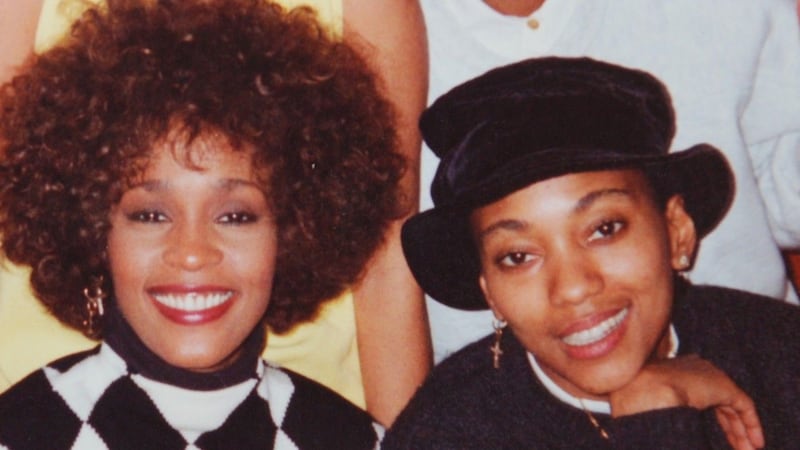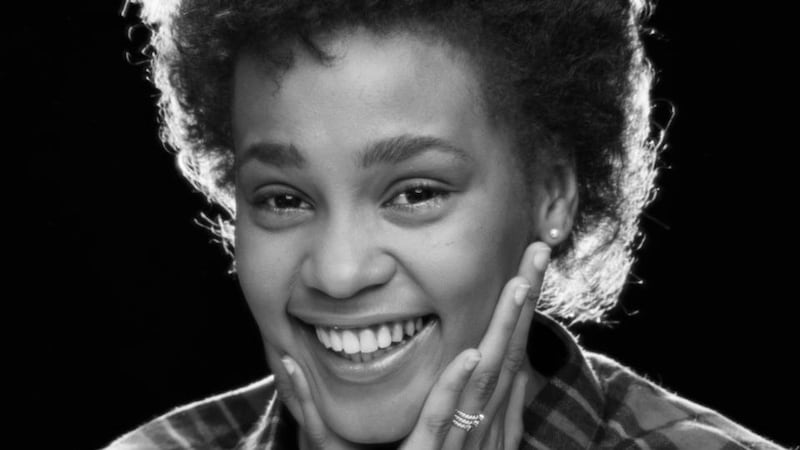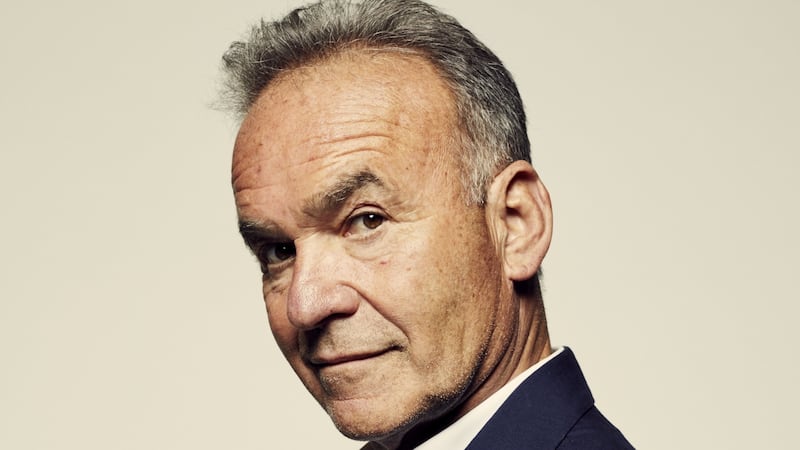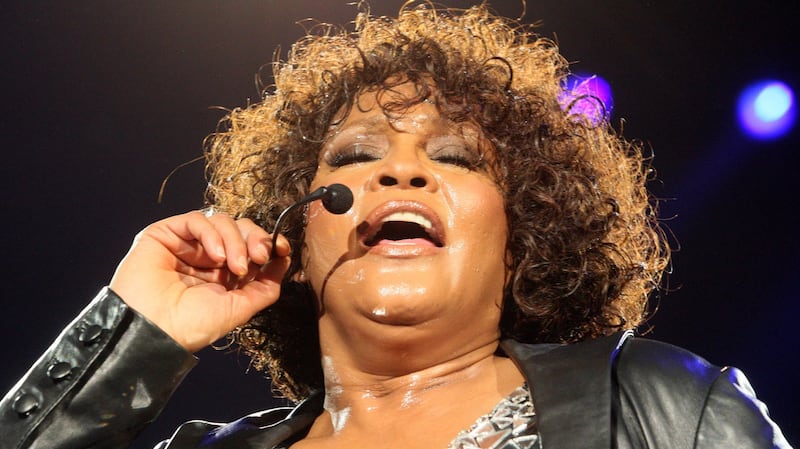On February 11th, 2012, as musical royalty descended on Los Angeles for the Grammys, Whitney Houston checked in to the Beverly Hilton hotel with an entourage of family and friends. In preparation for the pre-Grammy Awards shindig thrown annually by the music impresario Clive Davis, her mentor, Houston's assistant Mary Jones laid out a dress on the bed and left the hotel to pick up alternative attire at Neiman Marcus.
At 3.35pm, Jones returned to find Houston facedown in the bathtub. CPR was administered and paramedics were called to no avail. The police who arrived on the scene found an opened bottle of Champagne and a spoon containing a “white crystal-like substance”. Weeks later, an autopsy report would contribute Houston’s death to accidental drowning, heart disease and cocaine use. There were additional traces of a muscle relaxant, Xanax, marijuana and an allergy medication in the singer’s system.
She was 48.
Five years later and a new documentary – Whitney: Can I Be Me – sifts through the details of Houston's sad, secret life. What exactly killed Houston? Why did she drown? How did she drown? Was she simply overwhelmed by the controlling demands of her formidable mother, Cissy Houston, Svengali Clive Davis, and her record company, Arista? Did the aftermath of her toxic and co-dependent marriage to Bobby Brown send her spiralling? Or was it the dissolution of her decades-old lesbian relationship with her assistant Robyn Crawford?
It's complicated, as documentarian Nick Broomfield discovered.
"In the end I think the divide between who she was and what her public persona was became more and more difficult," says Broomfield. "And she just went down, down, down."

Broomfield's iconic gonzo-style – feigned bumbling, boom mic in the shot – has been parodied by The Simpsons and taken up by such film-makers as Louis Theroux and Morgan Spurlock. The director has previously door-stepped various parties to create the conspiratorial music docs, Kurt & Courtney (1998) and Biggie & Tupac (2002). Can I Be Me required an entirely different methodology.
You couldn't help but fall for Whitney. She was so, so funny. It's all so unfortunate"
“I remember the first time I put myself in a film,” recalls Broomfield. “My editor was completely horrified. It was a crazy gamble. And then it worked. And then everyone wants you to do what you did last. I had some shots with me in them for Whitney. But her story was so powerful that I was made redundant.”
Archive footage
Broomfield says he and his editor Marc Hoeferlin "fell in love with Whitney" while they pored over more than a hundred hours of archive footage. Sure enough, she emerges as wildly entertaining company.
In an early episode of Channel 4's The Word, when presenter Terry Christian asks her a cheeky question about a rumoured romance with Eddie Murphy, Houston beams and parrots his words back in a perfect Mancunian accent: "Rung me up?" Later, on the European leg of her 1999 tour, she lightly teases her husband, Bobby Brown, with a backstage rendition of his 1998 hit, My Prerogative.

“I didn’t know that much going in,” says Broomfield. “I went in out of curiosity. Which is pretty much how I’ve always worked. We were really choked up at the end of the edit, when we screened the film for ourselves. That is a rare experience. There have only been a couple of people who have really made me feel that way. But you couldn’t help but fall for Whitney. She was so, so funny. It’s all so unfortunate.”
She's this completely passionate, unbelievable performer even during some of those late performances. And you can see that she's struggling"
The new film will finally allow diehard fans to see extensive archive material shot by German director Rudi Dolezal for an unfinished documentary about the singer's 1999 My Love is Your Love tour. Dolzezal, who receives a co-director credit on Can I Be Me is a music tour veteran who has shot The Rolling Stones, Queen, Miles Davis and Michael Jackson.
These live performances, even with a voice that is already damaged by drug use, are quite something to behold. "I'm playing behind her," recalls drummer Michael Baker. "And I'm watching the muscles in her back expand. She was like a doggone bodybuilder. And that's how she sang every night. Every song."
“The live performances are so much more compelling than her records because she put so much gospel in it,” says Broomfield. “She’s this completely passionate, unbelievable performer even during some of those late performances. And you can see that she’s struggling. But she’s still giving it more than you’ll see anyone else give. She’s belting it out.”
Imploding relations
Dolezal's film – Whitney: Close Up – was scheduled to premiere on television in spring of 2000, before it was cancelled and shelved. The footage proves a treasure trove, particularly in terms of the imploding relations between Houston, Brown and Crawford.
Last year, Brown told Us Weekly magazine that Houston was bisexual and that she once had an affair with Tupac Shakur. He went on to say that Houston kept her relationship with Crawford hidden because of Cissy.

“I really feel that if Robyn was accepted into Whitney’s life, Whitney would still be alive today,” Brown told the magazine. “She didn’t have close friends with her anymore.”
Houston's reticence is, sadly, understandable. Broomfield's film includes extracts from Cissy's notorious 2013 interview with Oprah. In the matriarch's 2013 book, Remembering Whitney, she wrote of her dislike for Crawford, prompting Oprah to ask: "Would it have bothered you if your daughter was gay?" "Absolutely," Cissy snapped back. "You wouldn't have condoned it?" continued an incredulous Oprah. "Not at all."
Robyn provided a safe place for her. In that Whitney found safety and solace"
“I didn’t particularly like [Crawford],” Cissy told the talk show queen. “She just spoke too much, disrespectful sometimes, like she had something over Nippy (Houston’s nickname), and I didn’t like that at all. She was all right, she turned out to be all right, I guess. That was her friend.”
Houston and Crawford first bonded while they were teenagers working at a community centre in East Orange, New Jersey. When Houston's modelling career began to take off, she'd face bullying in school, and Crawford, who was originally a friend of Houston's older brothers Michael and Gary, would frequently come to the rescue. When Houston moved out of her family home, she shared her first apartment with Crawford.

Broomfield’s film contains footage that suggests that, deep into Houston and Brown’s 14-year marriage, Crawford remained a fixture in Houston’s domestic arrangements.
"I don't think she was gay, I think she was bisexual," Houston's make-up artist and friend Ellin Lavar says in Can I Be Me: "Robyn provided a safe place for her. In that Whitney found safety and solace."
In 2012, gay rights activist Peter Tatchell, who met and befriended Houston and Crawford at an AIDS charity event shortly before the singer's 1992 wedding, told Pink News that the marriage was strictly a business arrangement.
“When I met them [Houston and Crawford], it was obvious they were madly in love,” he claimed. “Their intimacy and affection was so sweet and romantic.”
Crawford, who finally quit as Houston’s assistant in 2000, did not speak to Broomfield for the film but she’s there in archive footage, and she is certainly there in spirit.
Uneasy romantic trinity
“She has actually talked to no one,” says the director. “Although funnily enough she encouraged other people to take part in the film. She’s still in touch with people. I think she’s pleased. I know she is. I had her phone number. But I just felt that we already have a clear and accurate depiction of their relationship in the film. And there’s something so special about that. So I didn’t feel that we needed to have to have Robyn now.”
Bobby and Robyn had some physical altercations and there were times where he wasn't always the winner"
Houston's marriage to Brown, understandably, made for an uneasy romantic trinity. In Derrick Handspike's unauthorised 2008 biography, Bobby Brown: The Truth, The Whole Truth and Nothing But . . ., the author quotes Brown as saying: "Now I realise Whitney had a different agenda than I did when we got married. I believe her agenda was to clean up her image while mine was to be loved and have children.

“Whitney felt she had to make rumours of a lesbian affair go away. Since she was the American Sweetheart and all, that didn’t go too well with her image. In Whitney’s situation the only solution was to get married and have kids. That would kill all speculation whether it was true or not.”
Can I Be Me respectfully broaches that speculation. "Robyn and Whitney were like twins," says Kevin Ammons, who worked as a security guard for Houston. "They were inseparable. They had a bond and Bobby Brown could never remove Robyn. He wanted to be the man in the relationship."
"Bobby Brown and Robyn Crawford were like fire and ice. They hated each other," David Roberts, Houston's former bodyguard, says in Broomfield's film. "They'd battle for her affections. Bobby and Robyn had some physical altercations and there were times where he wasn't always the winner. But then Whitney would always come and pour oil over troubled waters."
During the 1980s and early 1990s, Roberts was Houston's bodyguard and constant companion. Unlike the Kevin Costner film, there was never any romantic involvement between the superstar singer and Roberts, a former Special Forces sniper from Wales who was involved in the 1980 Iranian embassy siege. But in tribute to her role in The Bodyguard, she did once slip a note under his hotel room door that read "I will always love you".

‘Completely out of control’
After witnessing Houston overdose on her 1999 tour, Roberts filed a carefully compiled report to the people then managing her affairs.
“By then Whitney and Bobby were completely out of control,” says Broomfield. “And I think he and various other people tried to bring that to the attention of the estate. He wrote that report that was incredibly detailed. And full of concern. I have a copy of it. And no one chose to act on it. Not at all.”

Worse still, for his efforts, Roberts was let go. "There's no doubt in my mind, had that report been taken seriously, Whitney and Bobbi Kristina would still be here," claims Roberts.
In circumstances that were eerily reminiscent of those surrounding her mother's death, Bobbi Kristina Brown, the only daughter of Houston and Brown, was found unconscious in a bathtub on January 31st, 2015. She was pronounced dead in July, 2015, after spending six months in a medically induced coma. She was 22.
Can I Be Me tags along behind Bobbi Kristina, then aged six, as she takes the stage for guest spots on her mother's 1999 tour.
Roberts, who was plainly fond of the girl, does not mince words: “She never had a chance. She came along when things were only getting worse.”
Houston first dabbled with drugs with her brothers, Michael and Gary, as a teenager
Supermarket tabloids did a brisk trade during the 1990s by peddling the idea that Houston's life spiralled into addiction after she married Brown. She was the gospel-singing good girl – the church-going daughter of Cissy and a cousin of Dionne Warwick. He was a bad boy who, aged 20, when they first met, had already been shot and stabbed in the shoulder. Their tumultuous marriage (from 1992 to 2007), characterised by drug use, infidelity and a costly entourage, was seldom out of the headlines. But contrary to popular belief, Brown did not introduce his troubled wife to cocaine.
In fact, Houston first dabbled with drugs with her brothers, Michael and Gary, as a teenager. Speaking to Oprah in 2013, Michael said: “We were always, you know, being together most of the time, and her following behind me – I taught her to drive. We played together – everything that you do together as you’re growing up – and then when you get into drugs, you do that together too, and it just got out of hand.”
According to his 2016 memoir, Every Little Step, Brown was shocked when, just before their wedding ceremony, he saw Houston "hunched over a bureau snorting a line of coke".
‘Bobby wasn’t a terrible person’
“It’s not like Bobby is a bad person,” says Broomfield. “It’s just that Bobby and Whitney were unable to support each other, constructively. Instead, they enabled each other. They were totally besotted with each other. But they were unable to support each other in order to change. I think their close friends saw that. Bobby wasn’t a terrible person. Whitney wasn’t a terrible person. They just couldn’t change while they were together. That’s why they had to end.”
The truth is that Houston was always as “street“ as her R&B star husband. But that part of her personal history didn’t fit with what Broomfield calls “the Whitney character”.
As Pattie Howard, Houston's backing vocalist, notes: "People may not know it but Whitney was from the 'hood'. They wanted to present her as the princess. And that's what white America was presented with."

Houston was, indeed, born in the projects. After Newark's week of race riots in 1967, however, the family moved to East Orange, New Jersey. She was already a successful teen model when she was discovered by Gerry Griffith, director of A&R for Arista Records, and mentored by Davis, who had previously shaped a young Bruce Springsteen.
Davis had a vision for Houston and it was anything but street.
People shouted "Oreo" – brown on the outside, white on the inside – as her nomination for Best Female Vocalist was announced
Kenneth Reynolds, who worked in marketing for Arista Records recalls that: "Anything that was too black sounding was sent back. We wanted Joni Mitchell. We wanted Barbra Streisand. "
"She was very carefully groomed for nearly two years before the first album came out," explains Broomfield. "So every aspect of her was carefully considered. She was a major project. A lot of money was spent on her. Anything that was too R&B was out. They didn't want a female James Brown. That was not part of their vision. Which, of course, was a very successful vision."
In 1989, just as Houston topped 25 million in album sales and surpassed the Beatles's record with seven consecutive number one hits, she attended the Soul Train awards where, in response to her "white" music, she was roundly booed. Pre-Beyoncé and Mariah Carey, "crossover" was synonymous with cultural betrayal. People shouted "Oreo" – brown on the outside, white on the inside – as her nomination for Best Female Vocalist was announced.
Drug abuse
"It's not a good feeling," says Houston, in Can I Be Me. "It's horrible and kind of funny. You think: 'Are they booing me?' And you have to sit there and be cordial and smiley. And you feel like: 'Oh my God'."
Kirk Whalum, the saxophonist who toured with Houston for more than seven years recalls that night, which coincidentally, was the first time she met Brown. "It was devastating [for her]," says Whalum.
By the turn of the millennium, Houston found herself at the centre of a perfect storm of ongoing racial friction, marital troubles and drug abuse.
Friends, unable to watch Houston's decline, began to drift away. Her father, John, died in 2003, but not before his management company, John Houston Entertainment LLC, filed a $100 million lawsuit against his own daughter. Months before his death, he made a public appeal on the syndicated show, Celebrity Justice: "You get your act together, honey, and you pay me the money that you owe me."
Crawford’s departure in 2000, too, prompted a new, crippling dependency on crack-cocaine and other substances.
"Robyn was the one who was keeping her together," says writer Allison Samuels. "That's when drugs became so important to her."

Broomfield’s film is careful to avoid drug-related hysteria: “People are so moralistic and judgemental about drugs,” he says. “I feel very strongly about that. If you just condemn others outright for drug use, then lack of compassion is the greater problem. That’s not helpful for anybody. And it wasn’t helpful for her. This woman was incredibly sensitive. She was full of self-doubt. And I think that attitude made things so much worse.”
It was kind of a miracle that she lived as long as she did. She went down and kept going"
Houston’s final decade
In many others respects, too, Can I Be Me might have been far more of a slow-motion car crash. There is no mention, for example, of Brown's 2003 arrest for physically assaulting his wife. There is some gentle euphemistic language from Burt Bacharach, who was the musical director of the Academy Awards in 2000 when Whitney was famously booked to sing a medley of her hits, only to be dismissed amid reports that she turned up for rehearsals in a "discombobulated" and "totally out of it" state. There is very little footage from Houston's final decade.
“Do we really need to go over that?” says Broomfield. “I felt in the balance, against the trajectory of her life, it wasn’t important. From 1999 until the end of her life – which is a relatively long period in her life – she basically withdrew from public life, apart from that disastrous tour in 2009. It was kind of a miracle that she lived as long as she did. She went down and kept going. I guess you just follow your gut feeling on these things.

“I think there was enough said in the last years of her life. There was enough judgment. Her entire appearance changed. She lost all her teeth. Her mouth and her face changed completely. She looked like a different person. And in my mind it was clear which part of her life was more interesting. I didn’t dwell on her life at the end because I couldn’t, I didn’t want to see it. It was just too sad.”
“For 10 years or so I started waiting for the phone call that we all eventually got,” says Lavar of the Houston’s lonely last decade.
The title of the film was a question that Houston often publicly asked. The answer, alas, was a resounding no.
Whitney: Can I Be Me opens June 16th.













